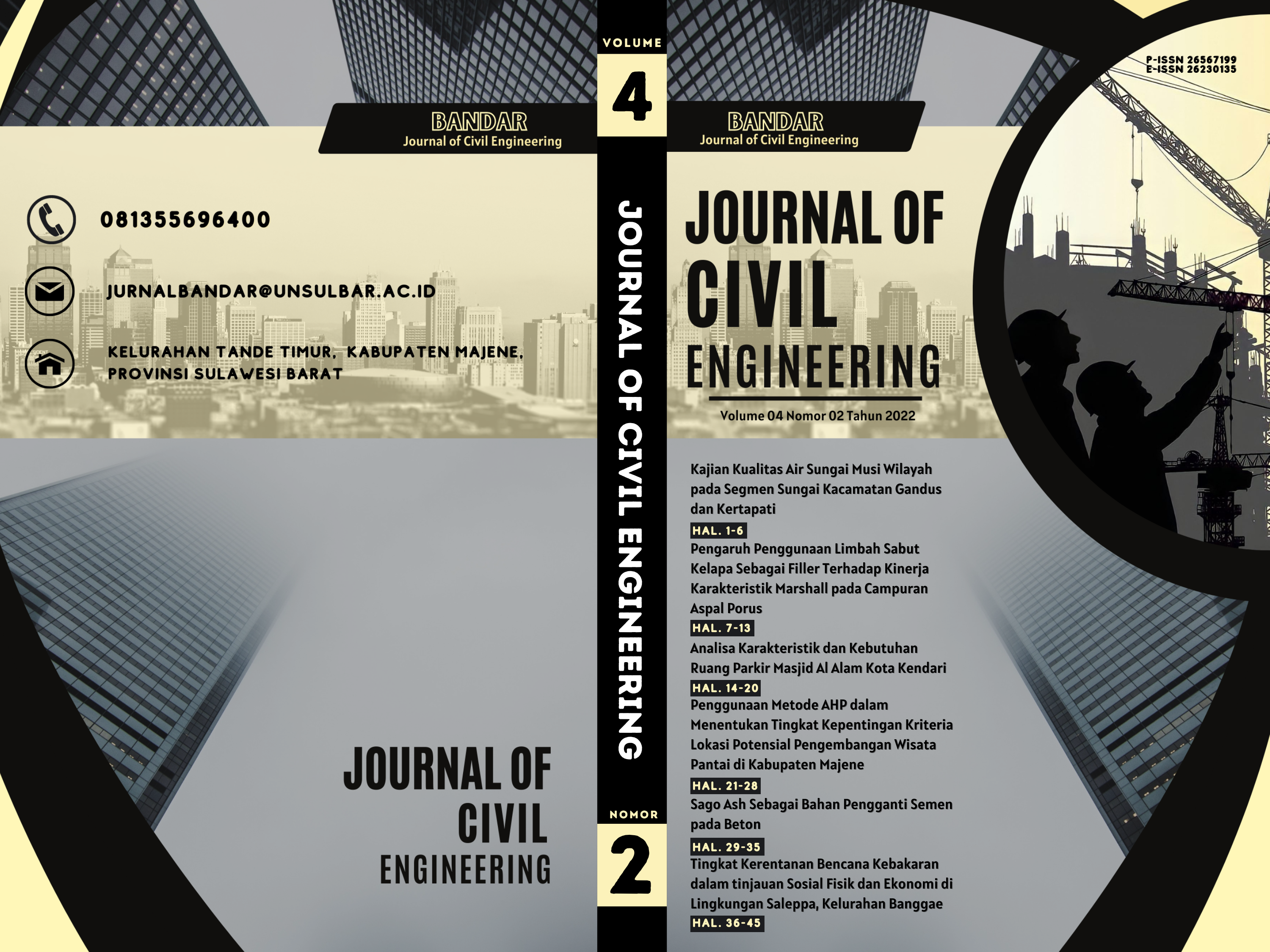Main Article Content
Abstract
Study Of Water Quality In The Musi River Area Gandus And Kertapati District. Population in South Sumatra is growing rapidly and creates problems for the provision of clean water, mainly due to domestic waste from community activities and industrial waste around the Musi river. Rivers are natural resources that are very vulnerable to pollution from domestic waste and industrial waste. The Musi River is the largest and longest river in South Sumatra and is used as a source of clean water, which is currently polluted by domestic and industrial waste. This study aims to analyze the quality of river water and determine efforts to control pollution of the Musi river. The method used is a combination of quantitative and qualitative methods. The SWOT (Strength, Weakness, Opportunity, and Threat) method is used to determine efforts to control water pollution. The results showed that the status of water quality at 5 monitoring points, Musi River waters located at all observation locations at stations 1, 3, 4, and 5 were classified into class C water quality, which was moderately polluted with a successive score of -28, - 21, -30, and -20 while at the observation location station 2 it is classified into class D water quality, which is heavily polluted with a score of -32 based on the US-EPA value system
Keywords
Article Details

This work is licensed under a Creative Commons Attribution-NonCommercial-ShareAlike 4.0 International License.
